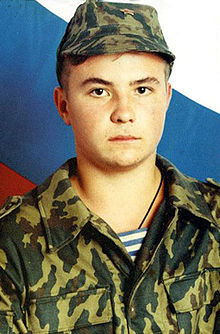Kaznj Russkih Soldat V Chechne Vikipediya

Russian soldier on skis wearing valenki boots Valenki stem from the traditional felt boots worn by nomads of the Great Steppe (including Southern ), whose history goes back over 1500 years. However, as it’s supposed, the boots appeared at the beginning of the 18th century. Valenki became widespread only in the first half of the 19th century, when they started being manufactured by industrial methods.
Unlimited recording storage space. Live TV from 60+ channels. No cable box required. Cancel anytime. Valenki wear out most quickly from the bottom and very often are soled with leather or other durable material to prevent this, so they are often worn with galoshes. Also, to protect from getting wet – they use a rubber sole, and there are valenki with glue-sew and molded soles.
Before this, they were quite expensive and only wealthy people could afford to have them. The increasing complexity of needs, the growing influence of the urban mores to the village caused the change of bast shoes with felt boots, and with it, the broad development of fulling production. Valenki became less popular in the urban life in recent decades because winters in turned to be more soft and slushy, and as result – lighter and waterproof footwear gradually won popularity and replaced valenki.
 Sep 22, 2015 Hello, If you have the bittorrent installed this link will do the trick. [Only for registered users. ] Greetings, Josep39.
Sep 22, 2015 Hello, If you have the bittorrent installed this link will do the trick. [Only for registered users. ] Greetings, Josep39.
Valenki are associated with a traditional rustic style of clothing; in cities they are usually worn by little kids, or they are worn by one and all in a severe, when other shoes don’t protect from the cold. Before the, the production of valenki was concentrated in the Semenov district of province, in the District of, and in the in. In 1900, contemporary jackboot factories of Russia produced 1.4 million pairs of valenki in the amount of 2.1 million. In 1900, a pair of valenki cost 1.5 rubles, in 1912 - 2 rubles, at the end of 1916 the speculative price reached up to 12-18 rubles per pair. See also [ ] • • • References [ ].
Location within Republic of Dagestan The Tukhchar massacre was an incident during the, filmed and distributed on tape, in which Russian were executed. Throughout the war, Russian soldiers reported finding taped executions of Russian officers and men. Experts say such films were an attempt to frighten enemy soldiers and advertise their deeds. Some videos were later sold as and ended up online.
One tape created in September 1999 showed six Russian servicemen, one as young as 19, being brutally executed by Chechen terrorists. The video, both in part and in whole, has been uploaded to various video streaming sites such as, where it is also known as the Dagestan beheadings.
English-language sites often contain misinformation about the event, including the names of the soldiers, the name of the Chechen commander, and the year. As a result, the event has been mistakenly identified as the of four Russian soldiers at the end of the.

Contents • • • • • • • • • • • Battle [ ] On 5 September 1999, two units of Chechen militants crossed into, seizing the border village of Tukhchar in the. The Chechen commander leading the attack was identified as Umar Edilsultanov (known as Karpinsky Amir, named after the microdistrict of Karpinka in ), a subordinate of Abdul-Malik Mezhidov, commander of the of. Attacking very early in the morning, the Chechens found and exchanged fire with 12 Russian conscripts and one officer of the brigade stationed at a police checkpoint to strengthen border security. Shortly after the fighting began, the Russian operator of the unit's 30 mm was killed, communication was disrupted, and the Russians had run out of ammunition. Vasily Tashkin ordered a retreat to a second checkpoint. During a lull in the battle, local residents told Russian soldiers that the Chechens had given them half an hour to leave the village.